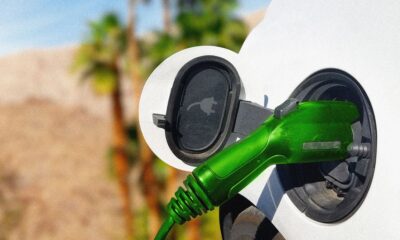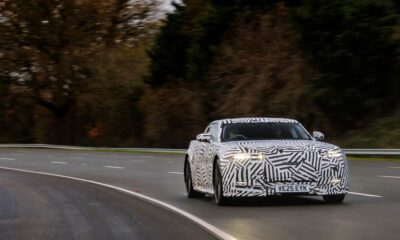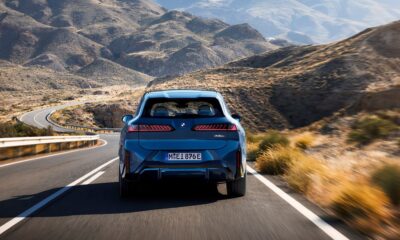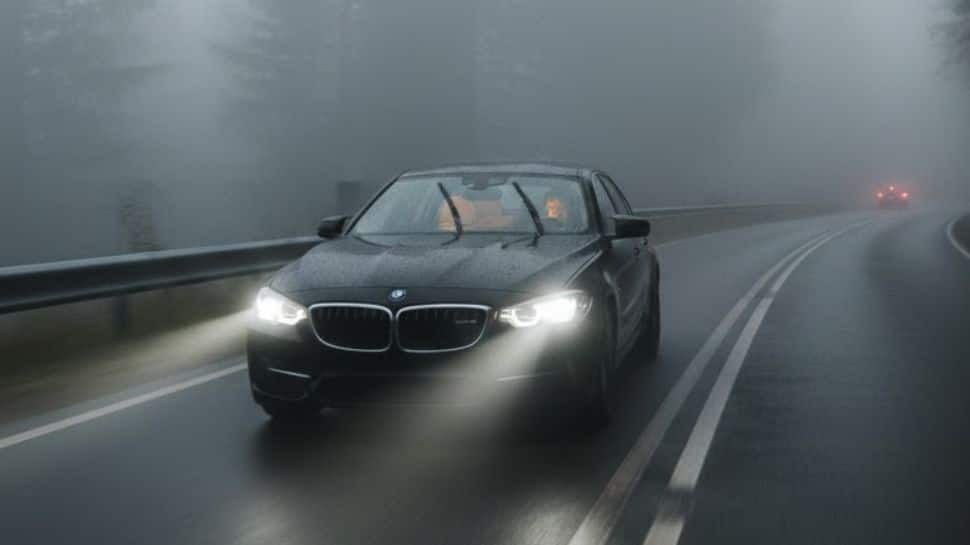Tech
The EV Battery Tech That’s Worth the Hype, According to Experts
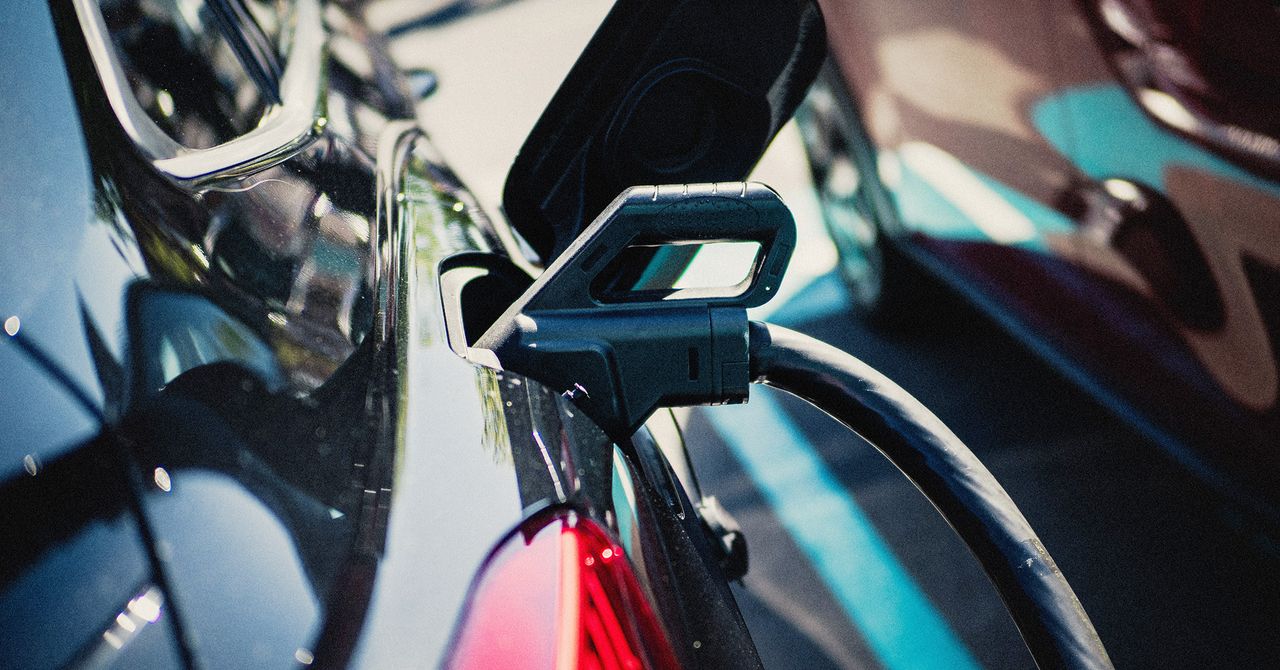
You’ve seen the headlines: This battery breakthrough is going to change the electric vehicle forever. And then … silence. You head to the local showroom, and the cars all kind of look and feel the same.
WIRED got annoyed about this phenomenon. So we talked to battery technology experts about what’s really going on in electric vehicle batteries. Which technologies are here? Which will be, probably, but aren’t yet, so don’t hold your breath? What’s probably not coming anytime soon?
“It’s easy to get excited about these things, because batteries are so complex,” says Pranav Jaswani, a technology analyst at IDTechEx, a market intelligence firm. “Many little things are going to have such a big effect.” That’s why so many companies, including automakers, their suppliers, and battery-makers, are experimenting with so many bit parts of the battery. Swap one electrical conductor material for another, and an electric vehicle battery’s range might increase by 50 miles. Rejigger how battery packs are put together, and an automaker might bring down manufacturing costs enough to give consumers a break on the sales lot.
Still, experts say, it can take a long time to get even small tweaks into production cars—sometimes 10 years or more. “Obviously, we want to make sure that whatever we put in an EV works well and it passes safety standards,” says Evelina Stoikou, who leads the battery technology and supply chain team at BloombergNEF, a research firm. Ensuring that means scientists coming up with new ideas, and suppliers figuring out how to execute them; the automakers, in turn, rigorously test each iteration. All the while, everyone’s asking the most important question: Does this improvement make financial sense?
So it’s only logical that not every breakthrough in the lab makes it to the road. Here are the ones that really count—and the ones that haven’t quite panned out, at least so far.
It’s Really Happening
The big deal battery breakthroughs all have something in common: They’re related to the lithium-ion battery. Other battery chemistries are out there—more on them later—but in the next decade, it’s going to be hard to catch up with the dominant battery form. “Lithium-ion is already very mature,” says Stoikou. Lots of players have invested big money in the technology, so “any new one is going to have to compete with the status quo.”
Lithium Iron Phosphate
Why it’s exciting: LFP batteries use iron and phosphate instead of pricier and harder-to-source nickel and cobalt, which are found in conventional lithium-ion batteries. They’re also more stable and slower to degrade after multiple charges. The upshot: LFP batteries can help bring down the cost of manufacturing an EV, an especially important data point while Western electrics struggle to compete, cost-wise, with conventional gas-powered cars. LFP batteries are already common in China, and they’re set to become more popular in European and American electric vehicles in the coming years.
Why it’s hard: LFP is less energy dense than alternatives, meaning you can’t pack as much charge—or range—into each battery.
More Nickel
Why it’s exciting: The increased nickel content in lithium nickel manganese cobalt batteries ups the energy density, meaning more range in a battery pack without much more size or weight. Also, more nickel can mean less cobalt, a metal that’s both expensive and ethically dubious to obtain.
Why it’s hard: Batteries with higher nickel content are potentially less stable, which means they carry a higher risk of cracking or thermal runaway—fires. This means battery-makers experimenting with different nickel content have to spend more time and energy on the careful design of their products. That extra fussiness means more expense. For this reason, expect to see more nickel use in batteries for higher-end EVs.
Dry Electrode Process
Why it’s exciting: Usually, battery electrodes are made by mixing materials into a solvent slurry, which then is applied to a metal current collector foil, dried, and pressed. The dry electrode process cuts down on the solvents by mixing the materials in dry powder form before application and lamination. Less solvent means fewer environmental and health and safety concerns. And getting rid of the drying process can save production time—and up efficiency—while reducing the physical footprint needed to manufacture batteries. This all can lead to cheaper manufacturing, “which should trickle down to make a cheaper car,” says Jaswani. Tesla has already incorporated a dry anode process into its battery-making. (The anode is the negative electrode that stores lithium ions while a battery is charging.) LG and Samsung SGI are also working on pilot production lines.
Why it’s hard: Using dry powders can be more technically complicated.
Cell-to-Pack
Why it’s exciting: In your standard electric vehicle battery, individual battery cells get grouped into modules, which are then assembled into packs. Not so in cell-to-pack, which puts cells directly into a pack structure without the middle module step. This lets battery-makers fit more battery into the same space, and can lead to some 50 additional miles of range and higher top speeds, says Jaswani. It also brings down manufacturing costs, savings that can be passed down to the car buyer. Big-time automakers including Tesla and BYD, plus Chinese battery giant CATL, are already using the tech.
Why it’s hard: Without modules, it can be harder to control thermal runaway and maintain the battery pack’s structure. Plus, cell-to-pack makes replacing a faulty battery cell much harder, which means smaller flaws can require opening or even replacing the entire pack.
Silicon Anodes
Why it’s exciting: Lithium-ion batteries have graphite anodes. Adding silicon to the mix, though, could have huge upsides: more energy storage (meaning longer driving ranges) and faster charging, potentially down to a blazing six to 10 minutes to top up. Tesla already mixes a bit of silicon into its graphite anodes, and other automakers—Mercedes-Benz, General Motors—say they’re getting close to mass production.
Why it’s hard: Silicon alloyed with lithium expands and contracts as it goes through the charging and discharging cycle, which can cause mechanical stress and even fracturing. Over time, this can lead to more dramatic battery capacity losses. For now, you’re more likely to find silicon anodes in smaller batteries, like those in phones or even motorcycles.
It’s Kind of Happening
The battery tech in the more speculative bucket has undergone plenty of testing. But it’s still not quite at a place where most manufacturers are building production lines and putting it into cars.
Sodium-Ion Batteries
Why it’s exciting: Sodium—it’s everywhere! Compared to lithium, the element is cheaper and easier to find and process, which means tracking down the materials to build sodium-ion batteries could give automakers a supply chain break. The batteries also seem to perform better in extreme temperatures, and are more stable. Chinese battery-maker CATL says it will start mass production of the batteries next year and that the batteries could eventually cover 40 percent of the Chinese passenger-vehicle market.
Why it’s hard: Sodium ions are heavier than their lithium counterparts, so they generally store less energy per battery pack. That could make them a better fit for battery storage than for vehicles. It’s also early days for this tech, which means fewer suppliers and fewer time-tested manufacturing processes.
Solid State Batteries
Why it’s exciting: Automakers have been promising for years that groundbreaking solid state batteries are right around the corner. That would be great, if true. This tech subs the liquid or gel electrolytes in a conventional li-ion battery for a solid electrolyte. These electrolytes should come in different chemistries, but they all have some big advantages: more energy density, faster charging, more durability, fewer safety risks (no liquid electrolyte means no leaks). Toyota says it will finally launch its first vehicles with solid state batteries in 2027 or 2028. BloombergNEF projects that by 2035, solid state batteries will account for 10 percent of EV and storage production.
Why it’s hard: Some solid electrolytes have a hard time at low temperatures. The biggest issues, however, have to do with manufacturing. Putting together these new batteries requires new equipment. It’s really hard to build defect-free layers of electrolyte. And the industry hasn’t come to an agreement about which solid electrolyte to use, which makes it hard to create supply chains.
Maybe It’ll Happen
Good ideas don’t always make a ton of sense in the real world.
Wireless Charging
Why it’s exciting: Park your car, get out, and have it charge up while you wait—no plugs required. Wireless charging could be the peak of convenience, and some automakers insist it’s coming. Porsche, for example, is showing off a prototype, with plans to roll out the real thing next year.
Why it’s hard: The issue, says Jaswani, is that the tech underlying the chargers we have right now works perfectly well and is much cheaper to install. He expects that eventually, wireless charging will show up in some restricted use cases—maybe in buses, for example, that could charge up throughout their routes if they stop on top of a charging pad. But this tech may never go truly mainstream, he says.
Tech
The Future of EVs Is Foggy—but California Still Wants More of Them

It’s been a weird and confusing few weeks for the auto industry—especially for those who hoped to see more batteries on the road in the coming decade.
Just this month: Ford announced a retrenchment in its EV business, canceling some battery-powered vehicle plans and delaying others; the European Commission proposed to backtrack its goal to transition fully to zero-emission cars by 2035; the US government said it would loosen rules that would have required automakers to ratchet up the fuel economy of their fleets. BloombergNEF projects 14 million fewer EVs will be sold in the US by 2030 than it did last year—a 20 percent drop.
What has not changed, it seems, is California’s interest in shifting to cleaner transportation. “The state is doubling down on our zero-emission vehicle deployment, providing market certainty, and continuing to lead on clean transportation regardless of policy reversals elsewhere or shifts by automakers,” Anthony Martinez, a spokesperson for Governor Gavin Newsom, wrote in a statement to WIRED. He said the governor’s “commitment to accelerating California’s clean transportation transition hasn’t changed.”
In 2020, Newsom became one of the first lawmakers in the world to commit to full electrification when he signed an executive order directing state agencies to create rules that would ban the sale of new gas-powered cars in the state by 2035. Those rules eventually aimed to ratchet up the share of battery-electric vehicles, with an ultimate goal of a mix of pure EVs and plug-in hybrids. (The PHEVs could only account for about 20 percent of sales.) Several other states, including Massachusetts, New York, Oregon, and Washington State, pledged to do the same.
Earlier this year, the GOP-led Congress revoked, through legislation, California’s power to set its own clean air regulations. The state responded with a lawsuit, which is still being argued. Meanwhile, Newsom signed another executive order directing state agencies to further the state’s electrification goals in other ways.
Now auto industry experts and players say the state’s determination to push through policy and market changes to meet its now half-decade-old goal may be overly ambitious.
“Getting to 100 percent might be challenging,” says Stephanie Valdez Streaty, the director of industry insights at Cox Automotive. “There are a lot of headwinds.”
A coalition of California business groups have argued that the state’s goals even for next year—a requirement that 35 percent of model year 2026 vehicles sold are zero-emission—aren’t realistic, and that California should push back its goals for zero-emission new car sales. (Enforcement of the rules is paused while the larger battle with US Congress plays out.) Zero-emission cars accounted for 21 percent of the overall annual state new car sales as of the fall, according to the California New Car Dealers Association, well below the 35 percent goal. “The timeline needed to be adjusted,” says the group’s president, Brian Maas.
Tech
Top 10 IT leadership interviews of 2025 | Computer Weekly

Artificial intelligence (AI) has been the biggest talking point for IT leaders in 2025 – both the emerging capabilities and opportunities from the technology, and the challenges of implementing it at scale and in a way that delivers measurable benefits.
For the digital, data and technology leaders that Computer Weekly is privileged to talk to every week, building AI into their wider strategies and managing often over-hyped expectations just adds to the difficulties of one of the most important roles in any modern organisation.
All of that is taking place while they need to keep a tight rein on costs in a still difficult economy, and juggle skills shortages, talent development and ensuring cyber security. So, how well are they doing?
Computer Weekly gets access to some of the top technology leaders in the world – and the details they share make fascinating reading for anyone looking to develop and implement an IT strategy to improve their business, support employees and enhance their careers.
Here are Computer Weekly’s top 10 interviews with IT leaders in 2025:
The BBC’s research and development (R&D) arm serves a public purpose, which, according to director Jatin Aythora, is to make some of the technologies and inventions it creates available for free or at a really low cost. Aythora sees his job as helping to achieve technical breakthroughs that the news and media industry can benefit from, which he says BBC R&D has done for many years. Computer Weekly talks to him about self-belief and learning from different industries
The UK mapping service has moved on a long way from paper maps as it now looks to use AI to understand, interpret and derive insights from geographical data. CTO Manish Jethwa has a career-long passion for turning geographical data into useful insight, and he’s leading the organisation’s development of next-generation geospatial technologies.
As a technologist who also runs corporate operations, Thomson Reuters’ CTO believes her tech background gives her a unique edge as the business information group looks to transform its products with AI. That’s why she’s on a mission to use digital systems to transform internal processes and customer services.
Richard Masters, vice-president of data and AI at Virgin Atlantic, is an expert in enterprise data, but his career began somewhere different – space. Before moving into analytics, Masters completed a PhD in astrophysics at the University of Oxford. He is now applying his expertise in astrophysics to the nitty-gritty details of using AI to improve customer experience.
The vehicle recovery specialist is looking to AI and connected vehicle technology to enhance customer experience and get motorists back on the road in the shortest possible time. Group CIO Antony Hausdoerfer is driving the plan for digital transformation.
Digital media is core to engaging nearly two billion fans of Premier League football around the world, with data analytics and AI playing an ever-more important role. For Alexandra Willis, director of digital media and audience development at the organisation that runs top-level club football in England, the priority is to establish data-enabled experiences that keep fans just as engaged and entertained off the pitch.
Among the questions a head of technology may ponder are: what does it mean to be innovative, and, perhaps, what technology can be used to drive an innovation strategy? Given the main way people tend to place bets with Bet365 is via its mobile app, Alan Reed, head of platform innovation at Bet365’s Hillside Technology platform, talks to Computer Weekly about how generative AI changes the way people interact with computers.
Kate Balingit has been leading the digital health initiative at Mars Pet Nutrition, reporting to the company’s pet care CIO, where she is focused on commercialising and deploying artificial intelligence through well-known pet food brands such as Pedigree, Iams, Sheba and Whiskas. She talks to Computer Weekly about making AI relevant across its brands to support pet health.
Dan Keyworth, director of business technology at McLaren Racing, says his role involves running the tech at the sharp end of Formula One, all the IT infrastructure that must be deployed to Grand Prix races, and the IT that keeps the business of McLaren Racing on track.
The world of performing arts is in a completely different universe compared to the bits, bytes and IT infrastructure that Keith Nolan and the IT team at Royal Ballet and Opera spend their work time in. He talks about how IT lowers costs and helps power stage innovations for world-class performances.
Tech
Pair Your Mac Mini With One of These Great Monitors
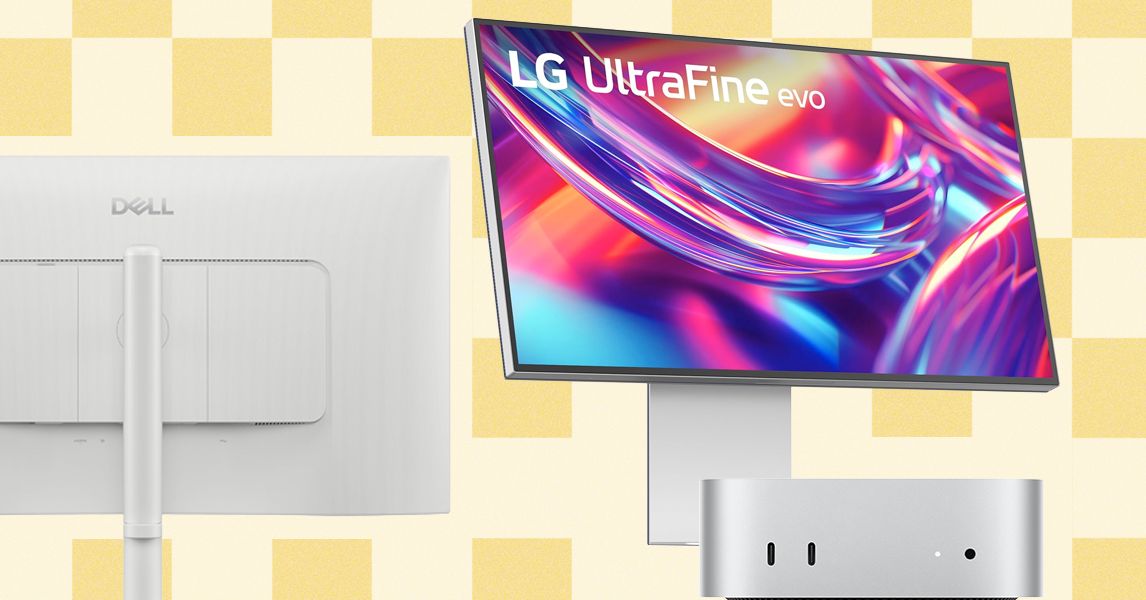
Just about any monitor can work with a Mac Mini. It doesn’t need to be made by Apple or have any official certification. There’s a case to be made for using a cheap 1080p monitor with the Mac Mini, but most Mac users will want something a bit more premium. As you can see by options like the Dell 27 Plus 4K, that doesn’t have to mean overly expensive. Either way, here are the four elements to consider when shopping for a good monitor to go with your Mac Mini.
Size and resolution: 27-inch and 32-inch monitors are the most common sizes these days, and there are larger options. I would also consider a 34-inch ultrawide monitor if you like the wider, 21:9 aspect ratio with the curved shape. With Apple, resolution is king. There’s a reason it invests so much in high pixel density for every screen it sells, even down to the entry-level options like the MacBook Air. Pixel density is what gives a screen its sharpness, and you need a lot more pixels when they’re stretched out across a large, external monitor. If you want to keep the fidelity up, I wouldn’t buy anything under 4K, and bumping up to 5K or 6K on a 32-inch monitor can be helpful. You also want to consider the refresh rate here. A 120-Hz refresh rate is what the MacBook Pro has, offering smoother animation, especially in games.
Adjustability: Apple monitors and iMacs aren’t exactly known for adjustability. They often have none at all, and cost more when they do. That isn’t the best for your posture and ergonomics. Famously, the Pro Display XDR charges an extra $1,000 to add a Pro Stand with proper adjustability. For ergonomic purposes, the top of the screen you’re working on should be as close to eye level as possible, and that ranges depending on someone’s height. If a monitor doesn’t have height adjustability, you’ll have to depend on a separate monitor stand or arm. Other than height adjustment, many monitors also have a stand that can swivel, tilt, and rotate, all of which are important when using multiple monitors together. This is also needed if you want to use a second monitor vertically, which has become increasingly popular.
Ports: Even the cheapest monitors will always have HDMI as a connection, which is all you need to connect directly to the back of the Mac Mini. Some monitors have USB-C that support display, which will let you connect to one of the Mac Mini’s Thunderbolt ports. The M4 Mac Mini comes with three Thunderbolt 4 ports, HDMI, and an Ethernet jack. The M4 Pro model has the same ports, except the ports are Thunderbolt 5 instead of 4. You’ll need to use at least one of these Thunderbolt ports if you want to connect more than one external monitor. These monitors also tend to have other ports, such as USB-A. These can be useful, as the Mac Mini doesn’t have any on its own.
Image quality: Apple prides itself on the image quality of its Macs, so in the case of the Mac Mini, you’ll likely want to get something worthy of your Mac. This is especially important for content creators, photographers, and designers. So, you’ll want to consider a monitor’s brightness, color accuracy, color coverage, and contrast. While some IPS displays offer decent color and contrast, mini-LED or OLED displays will guarantee better image quality. These also have significantly higher peak brightness in HDR content, which really brings games and movies to life.
-

 Business1 week ago
Business1 week agoHitting The ‘High Notes’ In Ties: Nepal Set To Lift Ban On Indian Bills Above ₹100
-

 Business1 week ago
Business1 week agoStudying Abroad Is Costly, But Not Impossible: Experts On Smarter Financial Planning
-

 Business1 week ago
Business1 week agoKSE-100 index gains 876 points amid cut in policy rate | The Express Tribune
-

 Sports7 days ago
Sports7 days agoJets defensive lineman rips NFL officials after ejection vs Jaguars
-

 Entertainment7 days ago
Entertainment7 days agoPrince Harry, Meghan Markle’s 2025 Christmas card: A shift in strategy
-

 Tech1 week ago
Tech1 week agoFor the First Time, AI Analyzes Language as Well as a Human Expert
-

 Business4 days ago
Business4 days agoBP names new boss as current CEO leaves after less than two years
-

 Fashion4 days ago
Fashion4 days agoIndonesia’s thrift surge fuels waste and textile industry woes


